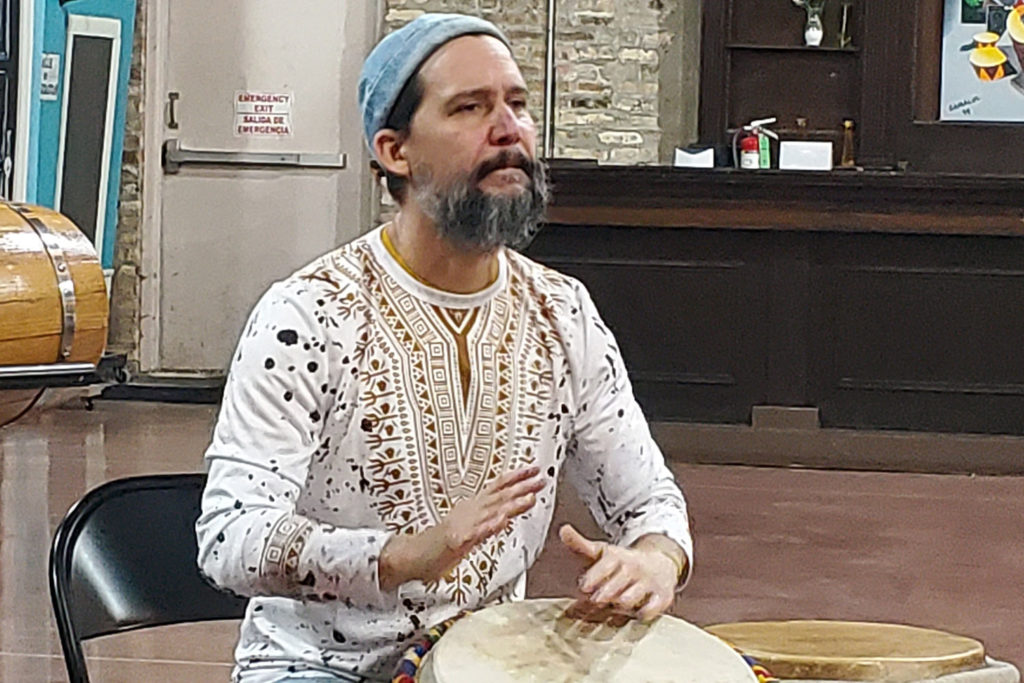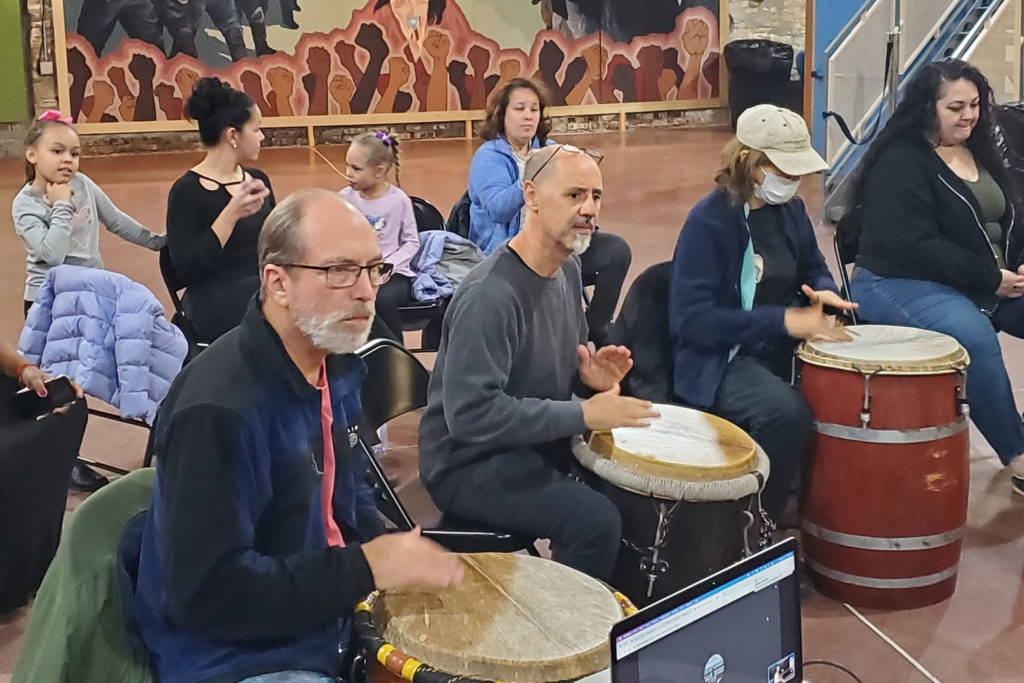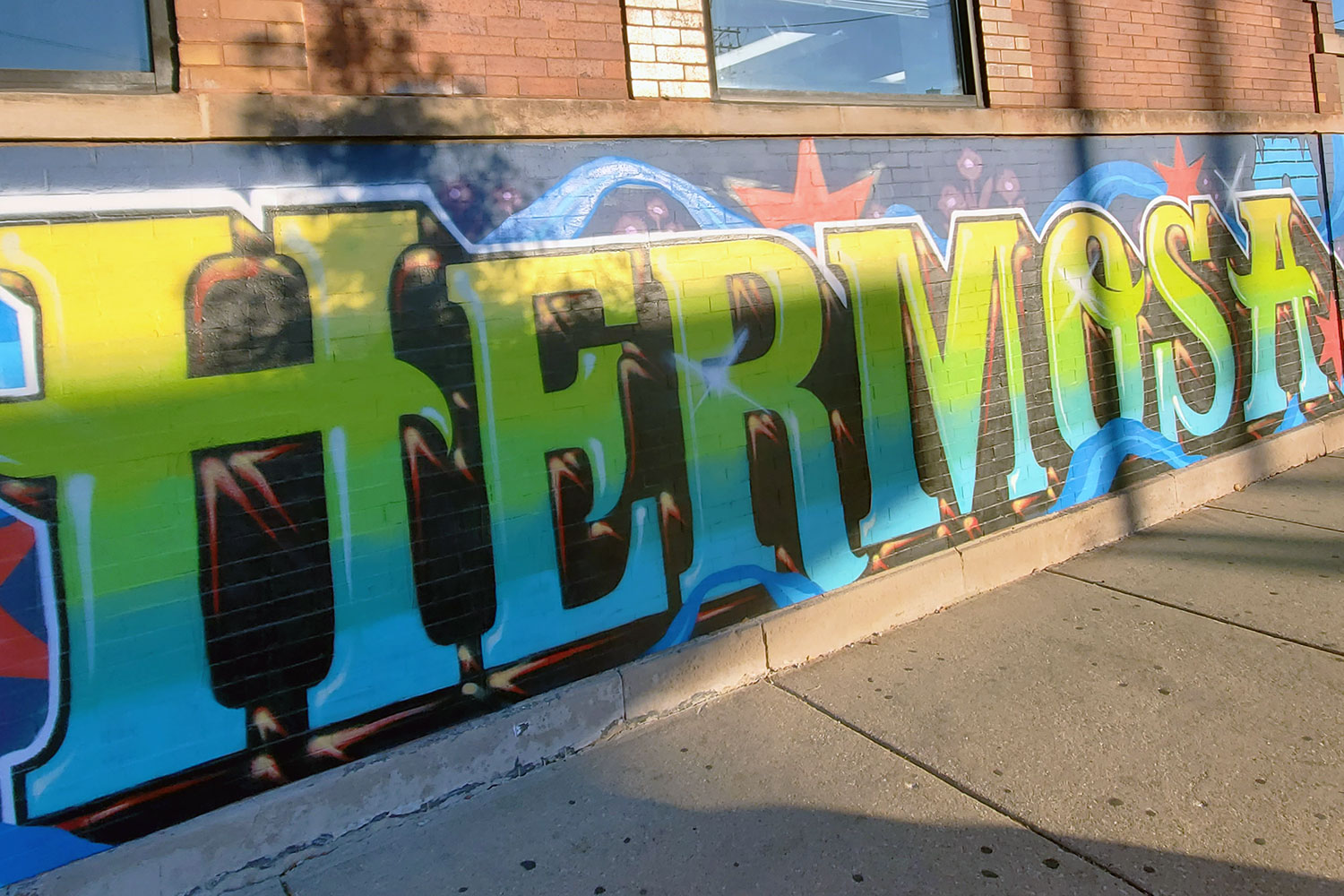Hermosa means “beautiful” in Spanish. The name of this small Northwest Side neighborhood long predates the migration of Puerto Ricans here, but it could not be more appropriate for a community that has become a center of Latin culture in Chicago. Hermosa is a neighborhood of taquerias, mueblerias, panaderias, carnicerias, lavanderias, abogados, and, on Friday nights, Puertorriquena bomba music at the Segundo Ruiz Belvis Cultural Center, 4046 W. Armitage Ave.
Named for a 19th Century abolitionist, Segundo Ruiz Belvis is the oldest Puerto Rican arts institution in the city. It was founded in 1971 in Wicker Park, but moved to Hermosa in 2007 — because that’s where Puerto Ricans were going.
“The demographics of the neighborhood changed,” explained executive director Omar Torres-Kortright. “We are primarily a Puerto Rican, Afro-Caribbean organization. We did a study of why was the shift and where were Puerto Ricans moving, and we found Hermosa. This is the most Puerto Rican zip code in Chicago, and it is a working-class Puerto Rican neighborhood, and that’s why we moved. Hermosa hasn’t really suffered the negative effects of gentrification. You see a community that’s very tightly knit. There’s a lot of culture and neighborhood feeling.”
And drumming. Walk through the center’s lobby, past the masks on the wall, the papier-mache bust of the mustachioed Belvis, past a colorful mural labeled “Libertad se Culitva,” and find master bombero Beto Torrens, from Porto Nuevo, Puerto Rico, teaching a dozen drummers the four-beat rhythms that form the fundamentals of bomba. Boom-boom-boom-slap. Boom-boom-boom-slap.

“These rhythms are super fast,” Torrens tells the students in his master class. “These are complicated patterns, even for people who practice a lot. The slap of all the sounds is the hardest one to master.”
Bomba drums are tall and barrel-shaped. The bodies are made of oak staves, the heads of goat skin. The students press the drums between their thighs and tilt them forward. Boom-boom-boom-slap. Boom-boom-boom-slap. Behind the drummers, three women shake maracas.
“I gotta give my thanks to my ancestors,” Torrens says. “Without them, this amazing tradition wouldn’t be alive. We are a mixed breed in Puerto Rico. We’re the perfect breed, because we’ve got a little bit of everything: Italian, Spanish, African.”
Bomba originated among the island’s African enslaved population, says Brenda Torres-Figueroa, who serves as the center’s artistic director. The enslaved were from different tribes, and spoke different languages, but drumming provided a common language that allowed them to communicate. The art form was first documented by a French naturalist who visited the village of Loiza — “the blackest, most Afro-centric town on the island,” according to Torrens — in 1797. Bomba was long considered an Afro-Puerto Rican art form, but is now embraced by all of the island’s ethnic groups.
“Bomba has been growing exponentially in the last 10 or 15 years,” Torrens says. “There’s been a huge boom. It is no longer the music of Puerto Rican Blacks; it is the music of the Puerto Rican experience as a whole. I’m a white Puerto Rican with blue eyes.”
Torres-Figueroa is an Afro-Puerto Rican who grew up on the island. “There was no bomba in my town,” though, so she did not discover the music until she moved to Chicago in 2000, to attend the School of the Art Institute of Chicago.
“I was interested in learning about my family history,” she says. “I have to dig in the collective history of bomba — songs that were played in the 1920s. Halley’s Comet, there were bomba songs about that. There’s a singing element to bomba. It’s call-and-response. It tells a story. There’s a song called ‘Domingo Negron’ about a man who left for New York, and whose sons were crying about his departure.”

Torrens ends his master class with a call-and-response song. While his students drum, he keeps time by rapping a barril de cua with cua sticks and singing “Buena Noche,” a well-known bomba number.
“You’re in my soul,” he tells his students. “Each one of you are part of my soul. When I go home to Puerto Rico, I take every one of you with me.”
Torrens is not going home to Puerto Rico yet. This Friday, November 18, from 6 p.m. to 9 p.m. he will lead a bombazo, a bomba celebration at which “everyone’s invited to drum, sing, play, dance” and eat Puerto Rican food.
“It’s a community outing,” he promises, “and we will create a community of support.”
In Chicago’s most Puerto Rican community.



